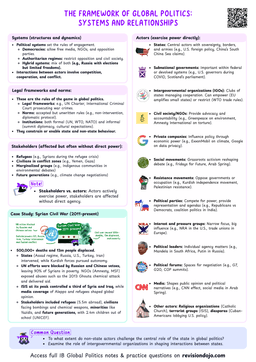The Evolution of Human Rights

- Natural Rights: Rooted in Enlightenment philosophy, these are rights believed to be inherent to all humans, regardless of laws or governments.
- Universal Declaration of Human Rights (UDHR): Adopted by the UN in 1948, it established a global standard for human rights, including civil, political, economic, social, and cultural rights.
- UDHR: Legal Status and Impact
- Not legally binding: As a declaration, the UDHR has no legal force but holds strong moral authority.
- Inspired key treaties: Forms the basis of major binding treaties like the ICCPR, ICESCR, CEDAW, and CRC.
- Influenced national law: Many constitutions and legal systems reflect UDHR principles.
- Global standard: Serves as a foundation for the modern human rights framework and promotes a universal vision of rights.
Positive and Negative Rights
- Positive rights: Require action by authorities (e.g. govts) to be fulfilled.
- Examples: Right to education, healthcare, legal defense.
- UDHR: Article 11 (presumption of innocence), Article 26 (right to education).
- Negative rights: Require others (especially the state) not to interfere.
- Examples: Right to privacy, free movement, property.
- UDHR: Article 3 (life and liberty), Article 5 (freedom from torture).
- Interdependence: In practice, both types often coexist.
- Example: Protecting prisoners from abuse (positive) supports their right to safety (negative).
- Positive Right
- Right to education
- Requires the state to provide schools, trained teachers, and accessible learning materials.
- Found in UDHR Article 26.
- Negative Right
- Right to freedom of expression
- Requires the state not to censor or punish individuals for their opinions.
- Found in UDHR Article 19.
- Interdependence
- Right to a fair trial (UDHR Article 10–11)
- Negative aspect: State must not interfere with due legal process (e.g. no arbitrary detention).
- Positive aspect: State must actively provide legal representation, a public hearing, and impartial judges.
- Shows how both types of rights must work together to fully protect justice.
Three Generations of Human Rights
(Concept introduced by Karel Vasak in the 1970s, rooted in revolutions and Western traditions)
- First Generation: Liberty (Civil & Political Rights)
- Examples: Freedom from slavery, privacy, equality before the law, fair trial.
- Second Generation: Equality (Economic, Social & Cultural Rights)
- Examples: Right to work, healthcare, education, social security.
- Third Generation: Fraternity (Collective & Global Rights)
- Examples: Clean environment, economic development, benefit from global trade.
- First Generation: Civil and Political Rights (Liberty)
- Focus: Freedom from state interference; individual rights
- Right to life, liberty, and security (UDHR Article 3)
- Freedom of speech (UDHR Article 19)
- Right to a fair trial (UDHR Article 10)
- Freedom of religion (UDHR Article 18)
- Voting rights (UDHR Article 21)
- Focus: Freedom from state interference; individual rights
- Second Generation: Economic, Social, and Cultural Rights (Equality)
- Focus: Positive rights that require state action to fulfil basic needs
- Right to education (UDHR Article 26)
- Right to work and fair wages (UDHR Article 23)
- Right to social security (UDHR Article 22)
- Right to adequate standard of living, including food and housing (UDHR Article 25)
- Right to join trade unions (UDHR Article 23)
- Focus: Positive rights that require state action to fulfil basic needs
- Third Generation: Collective or Solidarity Rights (Fraternity)
- Focus: Group and global rights that require international cooperation
- Right to self-determination (ICCPR Article 1)
- Right to development (UN Declaration on the Right to Development, 1986)
- Right to a healthy environment (UNGA 2022 Resolution)
- Right to peace
- Right to benefit from shared natural resources and global commons
- Focus: Group and global rights that require international cooperation
- 1st gen ≈ negative rights
- 2nd gen ≈ positive rights
- 3rd gen = community-focused rights.
Collective Rights
- Rights held by groups/communities rather than individuals.
- Arise in response to marginalization, oppression, or cultural preservation.


